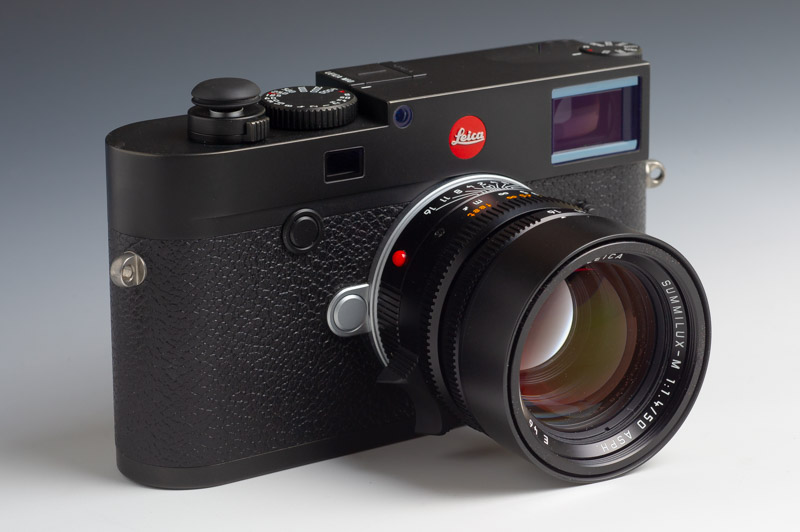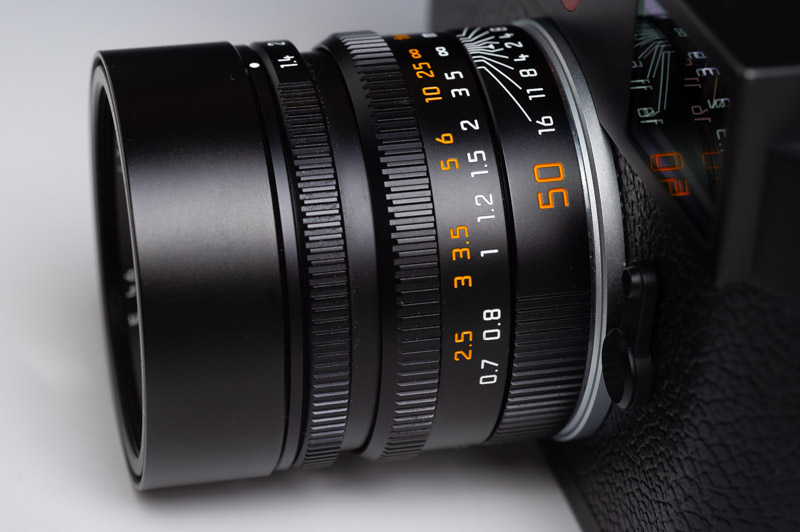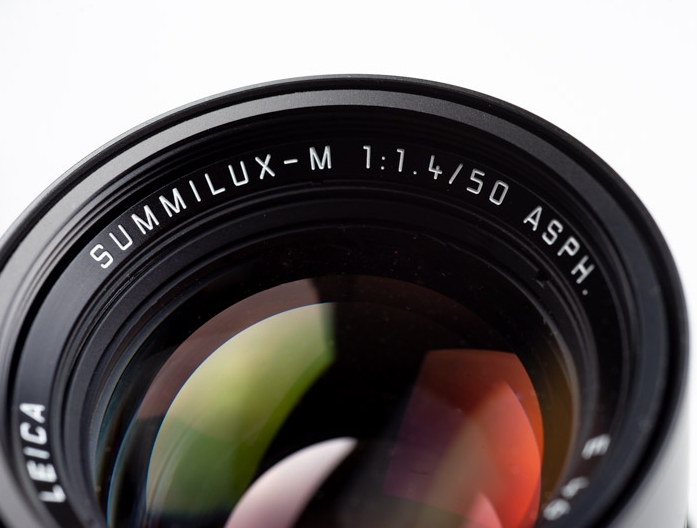The Leica 50mm Summilux-M 1.4 ASPH is my vote for the best standard lens for the Leica M system. You really can't go wrong when choosing a Leica 50mm lens. They are all great choices. The Leica 50mm Noctilux-M 0.95 ASPH when shot wide open gives an image that is like no other from Leica or from any other company. The Leica 50mm Summicron-M 2.0 ASPH is arguably the most famous lens ever made. It is the standard by which all other lenses are compared. The Leica 50mm Summarit-M 2.4 is the least expensive of Leica's 50mm offerings and it is a good value the is often unjustifiably overlooked. In this review I am going to talk about what makes the 50mm Summilux so great.
The Leica 50mm Summilux-M 1.4 ASPH was introduced in August 2004 and was designed by Peter Karbe. It replaced the 50mm Summilux 1.4 that was released in 1959 and holds the record for the longest production span in Leica history. It was slightly recomputed in about 1962 for better performance. A lot has changed in the 40 years between models. Today's version is near the pinnacle of quality that can be achieved in lens construction. The only lens that can surpass this lens is Leica's own 50mm Summicron-M 2.0 APO. It is a league of its own with a price to match.
The Leica 50mm Summilux-M 1.4 ASPH actually surpasses the 50mm Summicron which is quite an achievement. Usually faster lenses suffer slightly when compared to their slower counterparts but not so with the Summilux. When designing higher speed lenses the challenge is to keep lens corrections in control at wider apertures. Every stop faster increases lens aberrations and it gets harder and more complex to correct for these aberrations. It is also difficult to keep the lens small when increasing the maximum aperture. When compared to the previous design the lens is sharper in the middle as well on the edges of the frame. The use of aspherical glass has solved the problem of aberration correction as well as keeping the lens compact. The lens is usable when shot wide open. Actually the lens is quite sharp and stopping down is mostly for increasing the depth of field. The addition of floating elements in this design make the lens much sharper than the Summicron at closer focusing distances. The Leica 50mm Summilux-M 1.4 ASPH is a little bigger and heavier than the Summicron 50mm but it is a small price to pay for the increased optical performance. Color reproduction is beautiful and contrast is excellent. Distortion is 0.4 percent and wide open vignetting is 2.16 and reduces to 0.55 stops at f/5.6 which is exceptionally good for a 50mm lens.
The Leica 50mm Summilux-M 1.4 ASPH has eight elements in five groups and it has a Floating Element for close-up focusing. The first three elements are in front of the aperture blades and the remaining five elements are behind the blades. They are designed is similar to the 35mm Summilux-M 1.4 ASPH that was designed in 1994. The second and third elements from the front are designed to correct for chromatic aberrations. The fourth element is aspherical glass. Three of the elements are of highly refractive glass to correct for monochromatic errors. Much of what Leica learned from the development process for the 35mm Summilux-M 1.4 ASPH was used in the development of the 50mm.
Like the other 50mm lenses that Leica makes it stops down to f/16. It has a built-in lens hood that you turn to lock and unlock and slides easily to extend into position or to slide back into place for storage. Close focus is the standard 0.7 meters and has a filter diameter of 46mm. It was 335g as compared to 240g for the Leica 50mm Summicron-M 2.0 and has a 39mm filter diameter.
In use you will notice that the 50mm Summilux feels a little stiffer when focusing. This is because of the rear floating elements. I also find that I favor lenses with built in lens hoods. Even though modern lenses are very resistant to flare I prefer to always use a lens hood to get the best quality out of my lenses. The Summilux reproduces finer detail than the excellent Summicron with more contrast and a more delicate design balance equaling the f2.0 Summicron at f1.4 on the Summilux. The only time I recommenced stopping down with the Summilux is when focusing close. The floating element helps sharpen the image but stopping down is recommended. Bokeh is gorgeous and smooth. The transition of sharp to smooth is very soft. The only complaint ever heard about the Summilux is that the image can be too sterile, that it doesn't have the Leica glow. That may be true but this is a matter of personal preference, not an indication of an undesirable lens. I personally prefer the newer designs for digital and I still shoot the older lenses with my film cameras so to each his/her own. By the way that glow is a very slight spherical aberration.
Each Leica 50mm has its strengths and weakness's but if you want the best overall 50mm I would say that based on price vs performance the 50mm Summilux-M 1.4 ASPH is the winner. I have owned or used most of the 50’s and the Summilux has been my go to lens for a long time.
50mm Summilux-M ASPH
50mm Summilux-M ASPH
50mm Summilux-M ASPH




